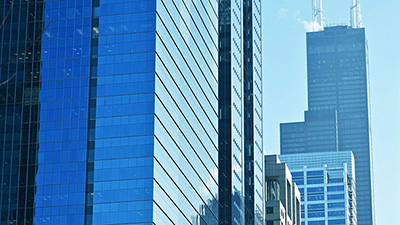
Tenant Quality Makes a Difference

Commercial real estate tenant quality grows even more important in a recessionary environment, reported DBRS Morningstar, Toronto.
Property owners can use tenant quality to forecast future cash flow stability during a recession–and the current rising interest rate environment is leading market participants to wonder if a recession is arriving–DBRS said in a report, In a Recessionary Environment, Tenant Quality Makes a Difference.
“Recessionary environments typically limit capital resources as underwriting and loan structures become more conservative,” the report said. “As a result, distressed companies may look to reduce operating expenses to manage the need for additional capital injections, and real estate costs are one of the larger business expenses. In some cases, tenants may end up defaulting on their lease terms and landlords are unexpectedly having to backfill vacant spaces.”
DBRS cited tenant quality as a primary business risk analysis factor. “Tenant quality and tenants’ ability to renew and expand space requirements are important factors when assessing cash flow stability,” the report said. “Historically, investment-grade tenants exhibited low default risk on their financial obligations compared with non-investment-grade tenants.” The average default rate of DBRS-rated global corporate entities equals 1.88% for the investment-grade BBB-rated category compared to 6.43% for the BB-rated non-investment-grade category.
The report noted investment-grade tenants typically occupy the most space within portfolios and said most tenants outside the 10 largest U.S. tenants are non-investment-grade or non-rated tenants. “Non-investment-grade tenants carry higher risk of defaulting on their financial obligations,” DBRS said.
The report further categorized tenant quality by issuer asset type to illustrate their respective cash flow stability risk tolerance. It found:
– Pension funds tend to have a more diversified portfolio by tenant concentration, with the top 10 tenants by rental revenue averaging 24.3% of their respective portfolios. These entities had a high exposure to investment-grade tenants and investment-grade parent companies, averaging 83% of the top 10 rental revenues. Only 4.9% of tenants in the portfolios were non- investment-grade, indicating a low risk tolerance.
– Retail-focused real estate investment trusts and real estate operating companies had one of the higher tenant concentrations, with the top 10 tenants by rental revenue averaging 48.5% of their respective portfolios.
– Industrial real estate investment trusts and real estate operating companies benefit from having one of the lower concentrations of their top 10 tenants by rental revenue, averaging 27.3% of their respective portfolios, the report said. But these entities had the lowest exposure to investment-grade tenants and investment-grade parent companies, totaling 48.4% of their top 10 rental revenues.
– Office entities had the lowest tenant concentrations among the issuer asset types, as the top ten tenants by rental revenue averaged just 20%, DBRS reported. But these entities had relatively low exposure to investment-grade tenants and investment-grade parent companies, totaling less than half of their top 10 rental revenues.
– Diversified entities reported figures in the middle range, as investment-grade tenants and tenants related to investment-grade parent companies totaled 65.2% of the top 10 tenants by rental revenue, DBRS said.
